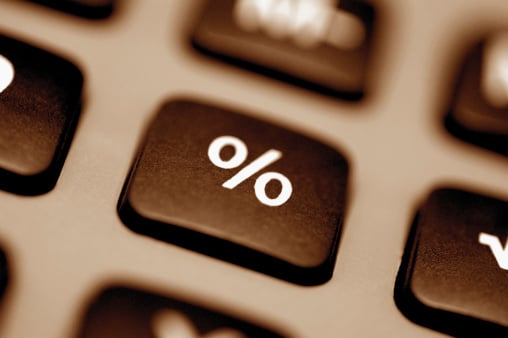Economy
Did the Fed Make a Huge Mistake Not Raising Interest Rates?
Published:
Last Updated:
After the decision was made by Janet Yellen and the Federal Reserve’s voting members of the Federal Open Market Committee (FOMC) to not raise interest rates in September, the financial markets have been volatile and many investors believe that the Fed sent the wrong message to the global markets. Source: Thinkstock
Source: Thinkstock
24/7 Wall St. has advocated for a rate hike for some time now. The risks and chances of unintended consequences in the future are just becoming too great after about seven years of a zero interest rate policy. Another, perhaps much larger concern is that $4.5 trillion balance sheet of the Federal Reserve’s holdings in Treasuries, mortgage-backed securities and agency debt.
So, since the no-hike decision, a note was sent to us from Haverford Trust’s Hank Smith. The firm’s chief investment officer believes that the Federal Reserve may have missed its opportunity to raise interest rates. With a no-go for September, that would seem to make the chances of an October hike slim — and he thinks that December’s FOMC vote also looks highly unlikely.
Smith warns that it now could even be a far longer time before rate hikes come. Smith oversees some $8.5 billion in assets under management, and he said:
Given the Fed’s focus on global concerns — which won’t clear up in just a few months — the first half of 2016 looks in doubt, and they won’t raise during election season. The Fed might have to push the hike until 2017. Because of the unwillingness to raise rates from crisis levels, the Fed has actually created more market uncertainty.
ALSO READ: 7 Dividend Hikes and Stock Buybacks Too Big to Ignore
Even the most dovish investors may acknowledge that the chances for a rate hike by the time 2017 arrives have to be more than just a distant possibility. A look at the fed funds futures currently shows the 100% chance of fed funds being 0.25% until February 2016. Fed funds futures also price in a 0.50% fed funds rate in August of 2016 and a 1.00% fed funds rate in June of 2017.
Smith had three points made as well. Volatility had been absent since 2012, but not now. Investors can be confident that rates are going to remain lower for longer, with a slow and gradual process likely. In this environment, stocks should still be better than fixed income and cash.
In that stock theme, high-quality dividend-paying stocks are viewed as more attractive than a 2.2% yield from the Treasury’s 10-year note. Smith views the current environment being supportive of high-yield instruments like real estate investment trusts (REITs), master limited partnerships (MLPs) and utilities.
This is just one more view that the Fed should have moved. Jeffrey Lacker, the lone dissenting Fed vote last week to hike rates, made a clear case on why he voted to hike rates. Other key market pundits have shown the belief that the Fed should have hiked — and there are of course others who think the Fed should remain on hold.
ALSO READ: America’s Richest (and Poorest) States
Finding a qualified financial advisor doesn’t have to be hard. SmartAsset’s free tool matches you with up to 3 fiduciary financial advisors in your area in 5 minutes. Each advisor has been vetted by SmartAsset and is held to a fiduciary standard to act in your best interests. If you’re ready to be matched with local advisors that can help you achieve your financial goals, get started now.
Thank you for reading! Have some feedback for us?
Contact the 24/7 Wall St. editorial team.